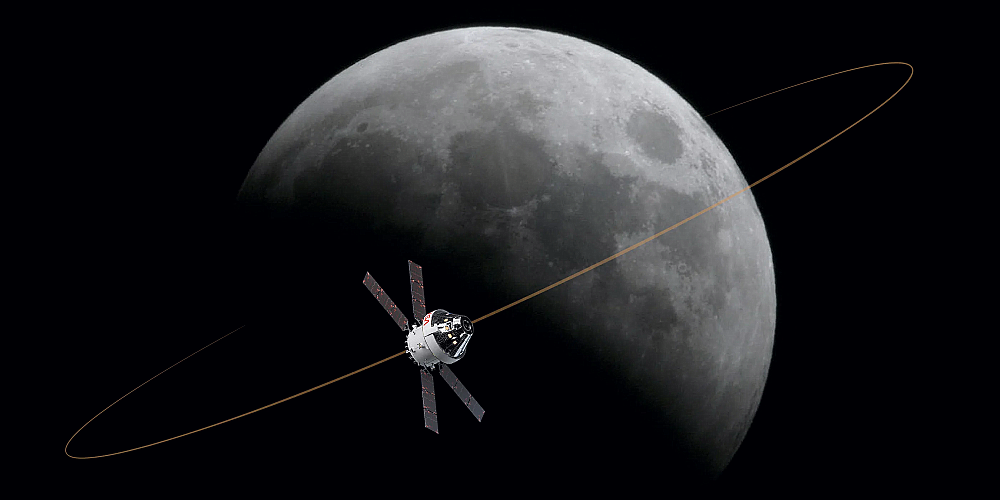
Starting with Apollo 11, NASA landed six crewed missions on the Moon between the summer of 1969 and Christmas of 1972.
They carried 24 astronauts, of which 12 walked on the lunar surface.
After Apollo 17 in 1972, no human has gone there yet.
Those were essential to claim the Free World leader Washington’s geopolitical bragging right against the communist Moscow to prove who was technologically superior.
It was strictly a political stunt: go to the Moon, plant the flag, and return to Earth.
So, once Moscow was beaten, there was no motivation for going there any more.
But that’s changing. NASA is committed to landing astronauts on the Moon again in 2025 as part of its Artemis Program.
China has plans to land humans on the Moon by 2030.
In the meantime, uncrewed missions are increasingly heading towards the Moon.
Russia’s robotic Luna-25, the first such endeavor in 47 years, crashed on the lunar surface shortly after 11:57 GMT on August 19.
India made history on August 23 by soft-landing its Chandrayaan-3 mission at the Moon’s south pole.
After so many years, why has the Moon landing become so cool again? The simple answer is: water.
Scientists have long speculated that water could exist on the Moon, but the samples that the Apollo crews returned in the 1960s and early 1970s appeared dry.
However, when Brown University researchers revisited those samples with new technology in 2008, they found hydrogen inside tiny beads of volcanic glass.
In 2009, a NASA instrument aboard the Indian Space Research Organisation’s (ISRO) Chandrayaan-1 probe detected water on the Moon’s surface.
Another NASA probe hit the south pole in the same year and found water ice below the surface.
It confirmed the findings of an earlier NASA mission, the 1998 Lunar Prospector, that the highest concentration of water ice was in the south pole’s shadowed craters.
Water on the Moon is crucially important, not the least for the astronauts’ use, which otherwise would have to be transported from Earth.
NASA says it costs almost $10,000 to launch a one-pound payload into the Earth’s orbit, which can be significantly reduced if lunar water is available.
More importantly, scientists can break it down to produce hydrogen for fuel in spacecraft for more distant missions and oxygen to breathe.
After so many years, why has the Moon landing become so cool again? The simple answer is: water.
A lunar pit stop will make missions to cosmic destinations far and beyond possible.
Lesser lunar gravitational force – one-sixth that of the Earth – also reduces the cost of launching a satellite into its orbit.
Other than water, several minerals on the Moon can be commercially mined and transported back to Earth.
These include a rare earth metal called neodymium, essential for making EV cells (batteries for powering electric vehicles), whose demand is growing as we shift away from fossil fuels.
Extracting rare earth metals causes high levels of contamination of the surrounding environment.
The Moon could be a pricier but greener option, offering a multi-trillion-dollar market.
Then there is helium-3, a rare element that can create a large amount of energy following the solar combustion process.
Helium-3 is so rare on Earth that it sells for $1.4 million per kilogramme.
Solar wind constantly bombards the lunar surface without any atmosphere or magnetic field for protection, depositing helium-3 on it.
Just to have an idea, at current price levels, there’s around $1,500 trillion worth of helium-3 on the Moon.
However, supply and demand economics means bringing helium-3 back from the Moon would significantly reduce the price.
But who owns the Moon?
Unfortunately, there is no clear legal framework to answer this question, and the ownership issue is still a grey area.
The 1967 Outer Space Treaty of the United Nations states that “outer space shall be free for exploration and use by all countries” and that “outer space is not subject to national appropriation or ownership.”
That was at the height of the Cold War, and the treaty aimed at preventing space from becoming another theater of warfare, including a place to launch nuclear weapons.
However, the present situation is entirely different, and the treaty doesn’t cover many potential scenarios such as the involvement of private entities.
Then, in 2015, sniffing industrial prospects of space and the increasing participation of private entities, the Obama administration drafted the Commercial Space Launch Competitiveness Act, which Congress passed the following year, making space mining legal.
Despite the absence of any universally accepted legal framework, several countries are planning permanent bases on the Moon and Mars.
NASA is working on a permanent lunar base by 2035 and likely a Mars base by 2050.
China’s International Lunar Research Station (ILRS) – with participation from Russia and several other countries – plans to have a similar lunar base in the 2030s.
That will be a research base for launching further missions to Mars, eventually setting up a base there.
By then, many heavy, complex and hazardous industries will move to the Moon, which will become a launch pad for regular crewed missions to Mars.
So, humanity is not going back to the Moon but forward, as Dr Jack Burns, director of the NASA-funded Network for Exploration and Space Science, says.
Unlike the 1970s, the present technology is sustainable, the cost is manageable, the goal is straightforward, and the vision is long.
Apollo had five kilobytes of Random Access Memory (RAM). Today, a simple mobile phone is millions of times more powerful.
A new space war has begun as humanity enters an uncharted territory.
ADVERTISEMENT
ADVERTISEMENT








































